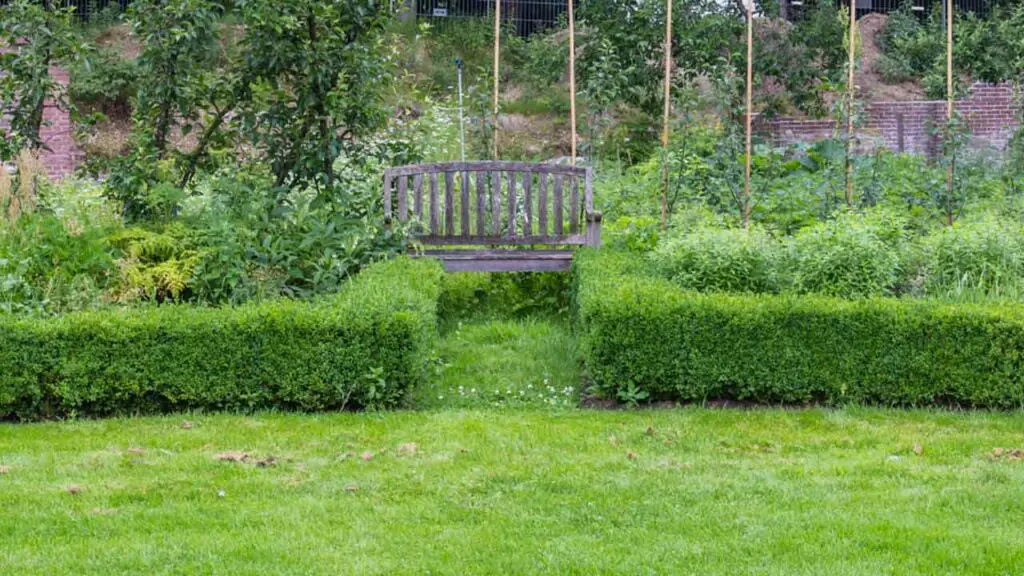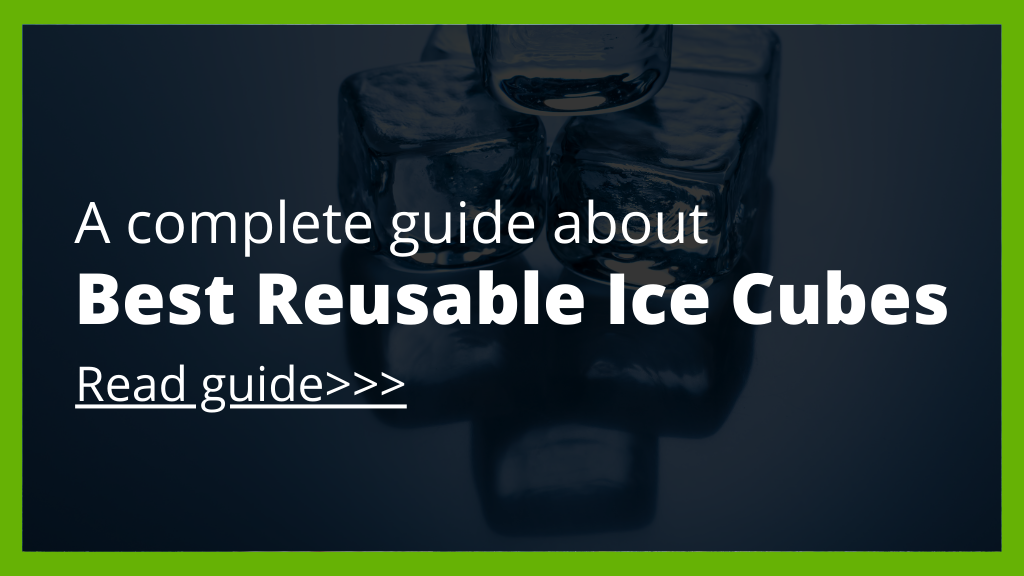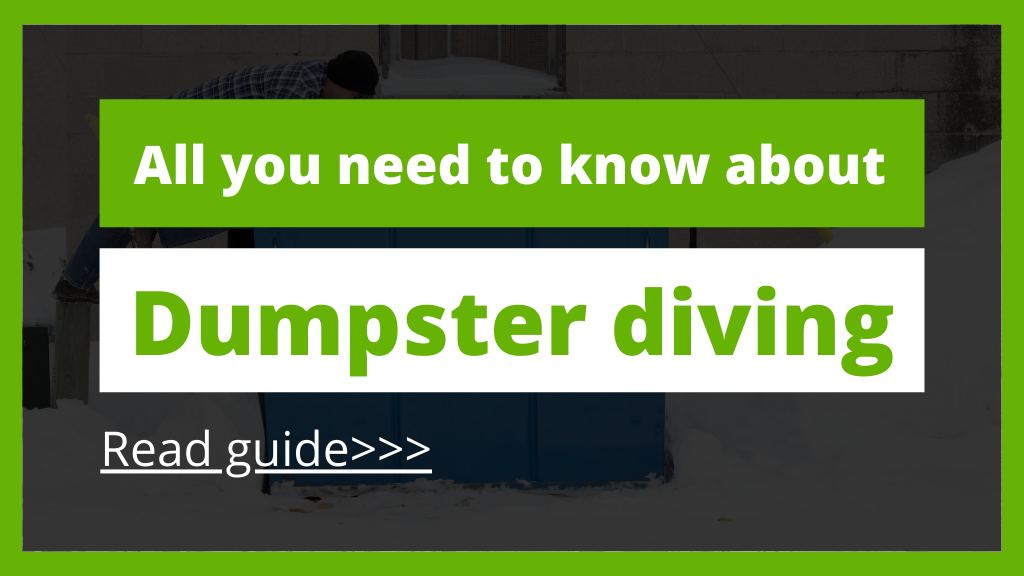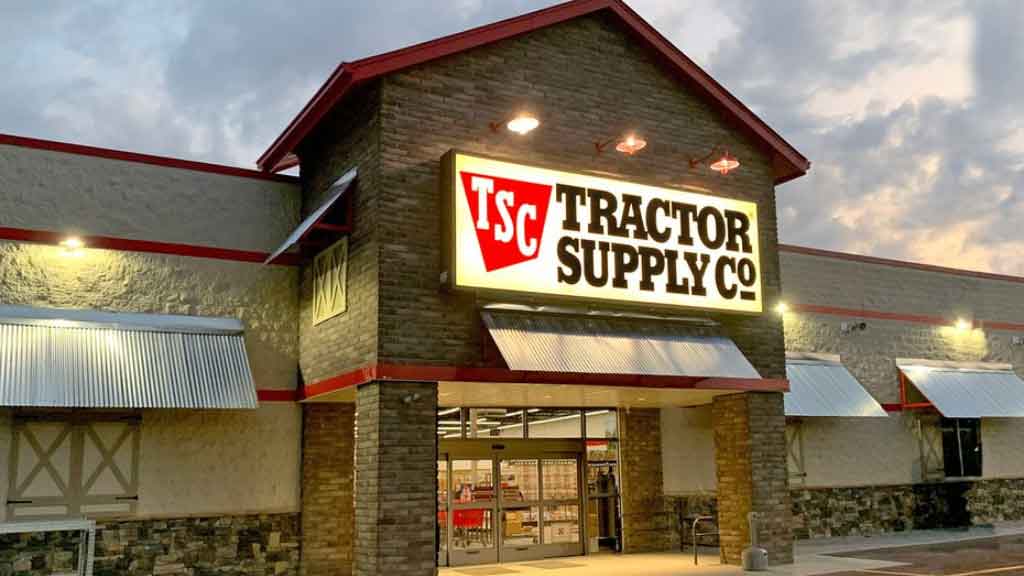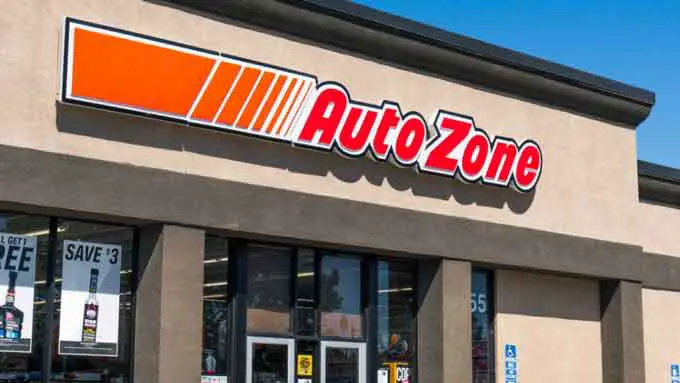Sustainable gardening has always been around. But it has been made popular in recent years. This type of gardening is not only easier to maintain but also leaves the most positive effect on our climate.
With the recent exposure to global warming, people have become more aware of climate issues. Sustainable gardening is one of the easiest ways to contribute to the climate and leave a positive impact.
However, sustainable gardens are different from regular gardening. That is where many people can go wrong. In this write-up, we will be talking about all you need to know about sustainable gardening and how to do it in simple steps.
Sustainable Gardening Vs. Regular Gardening
A sustainable garden is a garden that sustains itself. Pretty self-explanatory, right? Sustainable gardens are maintained with minimal water resources, organic compost, and minimal human care.
Sustainable gardens can be created in your small balcony, in a part of your lawn, or even inside your home. It doesn’t matter where you place it. The garden sustaining with the minimal resource provided is the only thing that matters.
The prime goal of sustainable gardening is to maintain zero waste, recycle and reuse water resources, and staying away from chemicals. These can also be called the basics of sustainable gardening.
The key difference between regular gardens and sustainable gardens is in the maintenance. When you are building a regular garden, you do not need to think about your plant choices. You choose and plant what you’d like to see on your lawn or your balcony. With sustainable gardening, even plant choice is important. Because without the right choice, the plants will not be able to survive an environment this tough.
Regular gardening requires regular watering, and reusing water is quite rare too. But recycling and reusing water is considered as one of the most important rules in sustainable gardening.
While a regular garden requires regular care and human intervention, a sustainable garden does not.
Why Is Sustainable Gardening Important?

There are many steps you can take when it comes to becoming more environmentally responsible. For example, conservation of natural resources, avoiding non-biodegradable packaging, opting for sustainable transportation, etc.
Just like these things, building a sustainable garden is also a part of becoming more environmentally responsible.
Here’s why sustainable gardening is important:
1. Prevents Weed Invasion
Weed invasion is one of the greatest problems in modern-day gardening. Even with no gardens in your lawn, you will notice that your lawn is infested with weed within weeks after cleaning. Weed invasion can cause great harm to native plant species and ruin soil health.
Weed grows faster than regular plants and spreads to the garden area quickly. It is how a weed invasion can steal precious land space of plants. Weed roots will absorb all the reserved nutrients for the plants. This will make the plants deprived of nutrients and intervene with their growth.
To prevent weed growth, people turn to herbicides. Herbicides will slowly deplete the soil instead of doing any good. This is how a weed invasion can harm a lawn.
Weed invasion in your area can be reduced with sustainable gardening.
2. Reduces Carbon Stripping From Topsoil
Carbon molecules stay locked inside the soil. It is said that we have lost half of the locked carbon in the soil since the industrial revolution. This is greatly concerning. Carbon is a precious nutrient that helps the soil with moisture retention and helps to balance soil health.
Over the last 250 years, we have lost half of the stored carbon from our topsoil due to our negligence. As we become more dependent on synthetic fertilizers, we are stripping more and more carbon from our topsoil. Regular gardening promotes using synthetic fertilizer, making it harder for us to not strip carbon from the land.
With sustainable gardening, people use natural and organic compost, avoid synthetic fertilizers entirely. Since you are avoiding synthetic fertilizer and using organic compost, you are no longer depleting the soil from organic nourishment. It increases soil carbon. Soil carbon can prolong bacterial lifespan. Fungal and bacterial, or soil microbial life locks up carbon.
With sustainable gardening, the no-dig method is applied as well. Avoiding tilling the topsoil locks carbon. It is said that locking up carbon in soil can help the climate more than planting trees.
3. Keeps Energy Consumption In Control
A gas-powered lawnmower, air conditioner, refrigerator, etc power tools consume a lot of energy and emit a concerning amount of greenhouse gases. Along with these powered tools, synthetic fertilizers and chemicals used in garden beds can consume more energy than you think.
If we think about the energy it costs from the production, storage, transportation, and even after post usage to process and return to nature, it is a lot. This might look simple to you, but it emits more greenhouse gases than you can imagine.
With sustainable gardening, the usage and process of artificial fertilizers are reduced. Gas-powered lawn mowers are asked to be avoided too. Along with that, people are encouraged to the garden by hand.
More trees in the lawn mean an increase in natural shading. It also keeps the house cool and saves a lot of money on air conditioning. Along with money, it reduces the energy consumption for ACs as well.
4. Stops Nutrient And Chemical Pollution And Prevents Harm To Wildlife
Nutrient pollution may not seem true to you, but I assure you, it is very real. The synthetic fertilizer people use in their gardens, contaminates and pollutes waterways. It can severely harm marine life as well.
Synthetic fertilizers used in lawns can wash away during rain, and run off to local waterways. With a larger amount of nutrients filling up the local waterbody, a simple process called eutrophication happens. When a water body is enriched with more than the required nutrients, it gets filled with plants. The eater body gets infested with algae. This process is called eutrophication. These plants and algae bloom can cause lower levels of oxygen inside the water. When these plants die, they require more oxygen to decay. Due to algae blooming, sunlight doesn’t penetrate through the water anymore. Sunlight is essential to many plants living in a water body. With lower levels of oxygen and no sunlight, many fishes and aquatic life can perish.
With sustainable gardening, there are no requirements for synthetic fertilizers. Reduced synthetic fertilizer usage reduces nutrient runoffs as well. This prevents harming marine life.
Along with nutrient pollution, usage of herbicides and pesticides can cause contamination in waterways.
With sustainable gardening, the usage of beneficial insects to get rid of pests is encouraged. To remove weed, pulling out the weed by hand is encouraged. This way, sustainable gardening can prevent chemical contamination in waterways.
5. Promotes Native Plant Species And Encourages Biodiversity
One of the greatest pros of sustainable gardening is that it encourages us to plant native and endangered plant species. Sustainable gardens are gardens that can sustain themselves on their own. It is why planting area and climate-appropriate plants are encouraged.
When one plants a tree that is climate-appropriate, it will be able to sustain itself on its own.
There are many living animals or insects that reside in your garden. When you follow sustainable gardening and plant native plant species, you reduce weed invasion.
You also contribute to the reduction in usage of pesticides, herbicides, and artificial fertilizers.
This can provide a house to many endangered insect species in your locality. By housing them in your garden, you are taking a part in encouraging biodiversity.
4 Benefits Of Sustainable Gardening
Sustainable gardens can benefit you more than you think. Be it a small garden on your balcony or the back of your lawn, a sustainable garden offers a wide range of benefits.
Here are a few benefits a sustainable garden will offer you.
1. Reducing Individual Carbon Footprint
Anyone who is slightly climate aware knows what a carbon footprint is. A carbon footprint is the amount of carbon emission an individual can cause through their actions. The average carbon footprint for a US local is 16 tons, making it one of the highest in the world. The smaller one’s carbon footprint is, the less harm one is causing to the environment.
As global warming is raising concern all over the world, many people are trying to reduce it by doing many things. Some are opting for electric cars, while some are opting for cycling; a cheaper option. Some are reducing the usage of plastic while some are boycotting air conditioners.
A sustainable garden is the easiest way to reduce your carbon footprint. Sustainable gardens require minimal care, meaning you do not have to look after them all day. Everything you use is organic or homemade. You also practice zero waste habits by composting food waste.
A sustainable garden allows you to practice leading a greener life. You can also influence your community into sustainable gardening. A community garden can reduce carbon emissions locally. It also can better the local ecosystem.
2. Healthy And Organic Food
Many people like to grow their food in their sustainable gardens. It is easy, comparatively cheaper, and healthier. Buying organic vegetables or herbs from the farmer’s market is costlier than we can imagine.
This is why you should grow your vegetables in your sustainable garden. And by growing your food, you are also maintaining a sustainable lifestyle, overall.
3. Building A Zero Waste Habit
By growing your food and using the food waste as compost, you are practicing the circle of life in the back of your lawn. You are also reducing the waste you are producing. Yes, the food waste will be composted in the garbage bin, but what good will it bring you?
When you are re-using your waste as compost, you are essentially saving money on fertilizer for your garden. One harmless habit is helping you to build a more climate-appropriate lifestyle and you are also saving money.
Sustainable gardening also promotes recycling water. Saving rainwater is quite rare and not many people do it. But people who practice sustainable gardening preserve rainwater, and use it to irrigate their garden. When you are following sustainability, you are practicing saving natural resources. Instead of letting that water go to waste, you are using it to benefit the climate.
4. Saving Money
The key benefit of sustainable gardening is a cleaner, greener and, better future. However, it can also help you to save money. You can cut down on organic food costs by growing your food in your garden.
You can cut down on fertilizers by making your compost from food waste. You can cut down on electric bills by growing native trees providing shades. Besides, when you have a sustainable garden filled with native plants and trees, it will improve the ecosystem in your house.
Your house will naturally become cooler during summer and warm during winter. No, sustainable gardening is not the answer to your heater or air conditioner. But it can help you to become less dependent on these machines by providing natural aid.
13 Sustainable Garden Design Tips
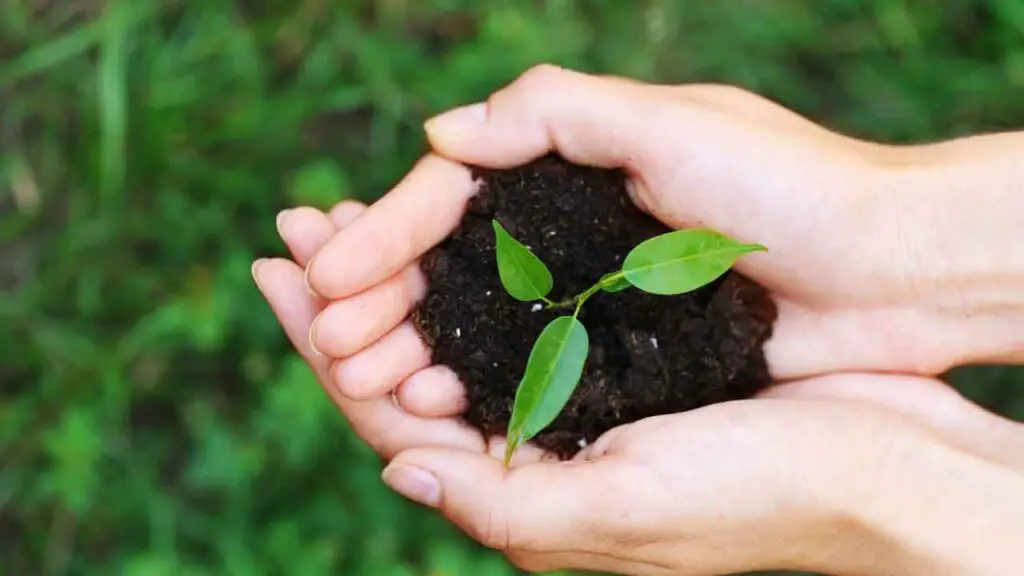
Sustainable gardening is not that hard if done right! The garden designing and maintenance techniques for sustainable gardening are quite similar to regular gardening.
But with sustainable gardening, you are also practicing sustainability overall.
It is why ensuring each step you are following, follows the statement of sustainability is a must.
Here are 13 tips that will make your sustainable journey more fun and exciting. And save a ton of money too!
1. Design Your Sustainable Garden According To Your Preference
When planning your garden, plan it according to your comfort. You can build a garden on your lawn, or even on your balcony. The area doesn’t matter, as long as you follow the rules of sustainable gardening.
If you are planning to build a garden in the back of your lawn, first work with the land. The lay of the land matters the most when it comes to the designing. If your lawn has a slightly low-lying section or an area that collects rainwater, you can plant trees that require and survives in a moist area.
If you don’t have lawn space, build your garden on your balcony. Use pots or containers to create one. There are potting soils infused with nutrients available in the market.
The next step is designing your garden. Organized gardening is easy to maintain. Sure, randomly throwing seeds and planting seeds seem fun. But is it of any good?
When you plant in order, you are making the maintenance easier. Plant the same type of seeds or plants together. That way watering them is easier. Plant low water plants in together to avoid wasting water.
2. Composting Is Must
Composting is considered one of the most sustainable ways to do gardening. Composting your green waste and using it in your garden ensures you are staying away from all the chemical fertilizers while saving money.
You can use vegetable peels, dried leaves, dead plants, grass clippings, etc to make compost for your garden. Do not use meat scraps. only use organic matters.
This also ensures that you’re not filling local landfills with garden waste. You are using that waste to enrich your garden. Composting is a great way to enrich and nourish your garden soil with organic soil conditioners.
3. Don’t Waste Seeds
The motto of a sustainable garden is to prevent waste and following a zero-waste method. Saving seeds can be a great way to both save money and prevent wasting. You can always save the seeds of the crops from your garden.
For example, if you have tomato plants in your garden, save the seeds post-harvest and regrow them. If you are eating fruit bought from the farmer’s market, you can always save the seeds. You can try to plant that in your garden. This small, and harmless habit can help you to expand your garden easily.
You can dry flowers and save the seeds from them. Always store your seeds in a cool and airtight container.
4. Use Natural And Organic Fertilizer Like Seaweed And Manure
Previously we talked about composting. When you are composting, you are reducing the need to use synthetic fertilizer in your garden. Along with composting, you can use natural and organic fertilizers to enrich and nourish the soil. Usage of synthetic fertilizers is not encouraged in sustainable gardening due to the garden waste it can produce.
Manure is one of the most nutritious natural fertilizers. It contains phosphorus, nitrogen, potassium, which can be found in soil. Adding manure to the soil can improve the condition of the soil. It will also improve the aeration, increase moisture retention and improve the quality of the soil overall.
Seaweed is another excellent organic fertilizer. It has a fibrous texture. Usage of seaweed in soils can improve aeration, drainage and, water retention quality. You can add seaweed directly to your compost and add that compost to the soil.
Laying pieces of seaweed on top of a layer of soil is another way to add it to the soil. However, the smell of decomposing seaweed can be too hard to handle. In that case, dry the seaweed, crush and turn it into a powdery substance. Scatter it onto the soil.
5. Choose Appropriate Plants
Choosing the right plants is a must too. For example, if your garden is set in a low-lying area, it will catch a lot of water. If you don’t plant plants that thrive in moist areas, they will die within a few days.
Opting for plants that require a lot of moisture, while living in high heat and low moisture areas can be fatal for the plants. This is why you should opt for a plant that can thrive in the area it is planted in.
Opting for climate-appropriate plants will require less maintenance. Opting for pest-resistant plants will also help.
Opting for native plants is recommended. You are contributing to the betterment of the local ecosystem by planting native plants. Native plants not only improve the local ecosystem but also improves the condition of your land.
6. No Chemicals Allowed
Avoid herbicides at any cost. There are many steps you can take for pest controlling but do not opt for herbicides or pesticides at all.
To control weed in your garden, you can plant more native plants. More native plants mean less weed invasion in your garden.
For pest control, you can opt for the help of beneficial insects. Many beneficial insects can help to get rid of the pests that are ruining your garden. You can buy beneficial insects in your local nursery.
7. Mulch
Mulching is essential to a thriving sustainable garden. Mulching helps the plants with moisture retention and keeps the temperature in control. With more moisture retention, you are also preventing water loss.
Mulching can be a great solution to herbicides. Because mulching keeps the weed in control by suppressing it, leading to no usage of herbicides in your garden.
8. Recycle And Reuse Water
Conserving water is essential to sustainable gardening. Natural resources like water should be saved and recycled.
Sustainable gardens require minimal human intervention. To make your garden sustainable, you should water the plants only when needed. Use recycled water as irrigation for your garden.
Make a rainwater collection system. It is great for saving rainwater. By collecting rainwater, you are reducing water usage. You can use that rainwater to irrigate your plants later.
9. Check your Lawn Mower
If you are using a part of your lawn for your sustainable garden, then this point is crucial for you. Many don’t check their lawnmower while practicing sustainable gardening. Avoid gas-powered lawnmowers. Opt for an electric lawnmower.
During mowing, check the blades. The blades need to be sharp for maximum cleaning.
We don’t recommend mowing weeds. Pull them by your hand. There is the risk of spreading weed to the entire garden while mowing it.
10. Be Water-wise With Low Water Plants
We have talked about conserving water resources earlier. Planting climate-appropriate trees is a great way to be water-wise. If you live in a hot and dry area, plant low water plants that have a high tolerance to drought.
This way you don’t need as much water, and you can also make your garden sustainable.
11. Use Organic Fences
The type of fencing you use matters in sustainable gardening. With organic fencing, you are being more environmentally responsible and prevailing sustainability.
Organic fences that are cheap, sustainable, and strong are quite hard to find. Bamboo is a sustainable fencing material, that is strong, looks good, and is cheap. Bamboo is considered to be the most sustainable wood on earth.
You can also plant trees to act as an organic fence. There are privacy trees and shrubs available. Planting a few around the edges of your lawn will do the job. Along with fencing, these can be a great way to prevail sustainability.
12. Label Your Plants
Labelling your plants are more important than you think. It is quite impossible to remember the plants by how they look. Labelling your plants will make maintenance easier.
Some plants don’t require attention during a certain season. By labelling that plant, you are ensuring that you won’t mistakenly disturb that plant with unnecessary maintenance.
Labelling will help you provide the proper care for each plant.
13. Keep Garden Maintenance Techniques Simple
You require minimal human intervention with sustainable gardening. it is why you should make your garden maintenance techniques simple.
You can keep a logbook of watering for the plants. This way you will not over-water. You can also label your plants. We have talked about it earlier.
Staying away from chemicals, making your compost, gardening by hand is easy maintenance techniques that will help you to get better at sustainable gardening.
How Do Gardens Help The Environment?
Gardens help the environment the most. You are building a more sustainable and better ecosystem for your area. Community gardens can improve the local ecosystem a ton. Gardens or planting trees will reduce overall carbon emissions in the area. It will also improve the natural shading of the area.
Gardening can reduce food costs, ultimately reducing food transportation costs. With less transportation, you are reducing the local carbon footprints as well. Gardening also leads to water preservation, which leads to saving water resources more. Gardening can help the environment more than you think!
What Is Sustainable Horticulture?
Sustainable horticulture is growing climate-appropriate plants with minimal chemical usage, and maintaining zero waste. The goal with any type of plantation or gardening is achieving sustainability. There is no certain answer to what sustainable horticulture is. It is not that different from regular gardening.
The key difference is maintaining sustainability by following simple steps and habits. In sustainable horticulture, growing climate-appropriate plants is followed with biologically enriched soil and using self-made compost. Practicing a zero-waste habit by composting leftover food, saving and using rainwater, etc.
What Does It Mean For Crops To Be Sustainable?
Sustainable crop production is the outcome of sustainable horticulture. With sustainable crop production, you aim to practice and produce crops for a long time with a sustainable method. Sustainable crops are made with organic and natural fertilizers and do not have any herbicides used. The irrigation system for these crops follows a sustainable irrigation method as well.
What Are The Elements Of Soil?
Soil has four components; minerals, organic matter, air, and water. The macronutrients or primary nutrients in the soil are nitrogen, potassium, phosphorus, magnesium, calcium, and sulfur. These can be found in larger amounts in the soil. The micronutrients are iron, manganese, zinc, copper, chlorine, cobalt, etc. These are essential in plant nutrition too but can be found in smaller amounts in the soil.
What Is Environmental Responsibility?
Environmental responsibility is a pretty self-explanatory word. There are different types of environmental responsibility. Corporate environmental responsibility refers to big corporations abstaining from harmful practices towards the environment.
Social environmental responsibility refers to the duties of society to keep the environment cleaner and greener. Respecting the nature that has nurtured us, and trying our best not to harm it with little practices like reducing our carbon footprints, avoiding using plastic or non-biodegradable products, building gardens in our homes is our environmental responsibility.
By practicing a greener and organic lifestyle, we will be teaching the next generation to be equally respectful and responsible towards nature. When we are not here, our little habits will ensure they live in a safer world while doing their best to leave the world safer for their future generation.
Why Is A Vegetable Garden Sustainable?
A sustainable vegetable garden is a garden that sustains itself. With sustainable vegetable gardens, the produce is organic. The usage of pesticides and herbicides is lesser to minimal. In some sustainable vegetable gardens, herbicides and pesticides are not used at all.
Sustainable vegetable gardens that are created commercially, prioritize soil health the most. In simpler words, they never spray herbicides or pesticides in the soil, as this will create resistance among pests and weeds.
They do not put synthetic fertilizers in the soil either.
Using synthetic fertilizer in the soil deteriorates soil health. Most commercial sustainable vegetable gardens are situated right around a local farmer’s market. Less distance lessens transportation energy consumption leading to a healthy impact on our environment.
If you are planning on building a sustainable garden in your backyard, then we recommend that you build a vegetable garden
Because, with a vegetable garden, maintaining sustainability is easier. Sustainable vegetables are often produced in season. Meaning these are not available all year round. Storing the vegetable means more carbon emission, which breaks the principle of sustainability. Hence sustainable vegetables are eaten shortly after harvest, and can’t be found once the season is over.
Sustainable vegetables once mixed in the soil, nourish and enrich it instead of depleting it.
With a vegetable garden, you can grow your food in your backyard. Organic veggies are loved by all but it is quite expensive. With a sustainable vegetable garden in your backyard, you can save money on organic produce.
With your sustainable vegetable garden, creating compost is easier too. Green waste from the vegetables can be used in making compost. This compost will be later used in the garden. It can be a great way to practice sustainability.
Importance Of Gardens In Our Life
Sustainable gardening, also known as green gardens is comparatively friendlier and lenient towards our climate. Regular gardening is good for our climate and should be encouraged as well. But green gardens promote sustainable behavior and helps us to create a more sustainable eco-system overall.
Gardens are the easiest way to contribute to saving the environment. By building a garden, you are contributing to reducing the negative impact on the environment. Gardens can help you to grow your food. It can help you to save and reduce energy consumption. Gardens can help you to contribute to promoting biodiversity. By building a garden you can help the climate more than you think.
What Do Sustainable Tomatoes Mean?
Tomatoes, if not grown with sustainable methods, still emit less greenhouse gas than other crops.
Sustainable tomatoes are sustainably grown organic and fresh tomatoes. Organic produce that is grown sustainably is most likely grown with minimum to no herbicide and pesticide sprays, in biologically enriched soil, and with the minimum amount of synthetic fertilizers used. With sustainable crops, the primary rule is to follow steps that will harm nature the least.
So, when you are buying sustainable, organic, farm-grown tomatoes from a market, it should check off a few things. First, it should be grown naturally, without the usage of synthetic fertilizer or chemicals sprayed. Secondly, it should come in recyclable or biodegradable packaging.
The farm should be anywhere near the market to cut down transportation energy consumption. Last but not least, the tomatoes should be in season. Stored harvest from last season requires a lot of greenhouse gas emission, therefore, these tomatoes are no longer a sustainable production.
If these seem too complicated to follow, you can always grow tomatoes sustainably in your backyard or balcony.
Final Words
With this write-up, you have covered the basics of sustainable gardening. Out of all the basics, the most important rule is to keep learning. There are no specific rules for sustainable gardening. But to better your actions, you can gather with people who also practice this method and learn from them.
Sustainable gardening is a type of gardening that is free of waste with a lot of benefits. Whether it is gardening or sustainable gardening, the only important thing is achieving sustainability through it.
Achieving sustainability requires a lot of practice. By practicing sustainability, you are giving back to the environment.
You are fulfilling your environmental responsibility by leading a sustainable lifestyle.
With sustainable gardening, you are teaching your family to be more responsible toward the environment.

